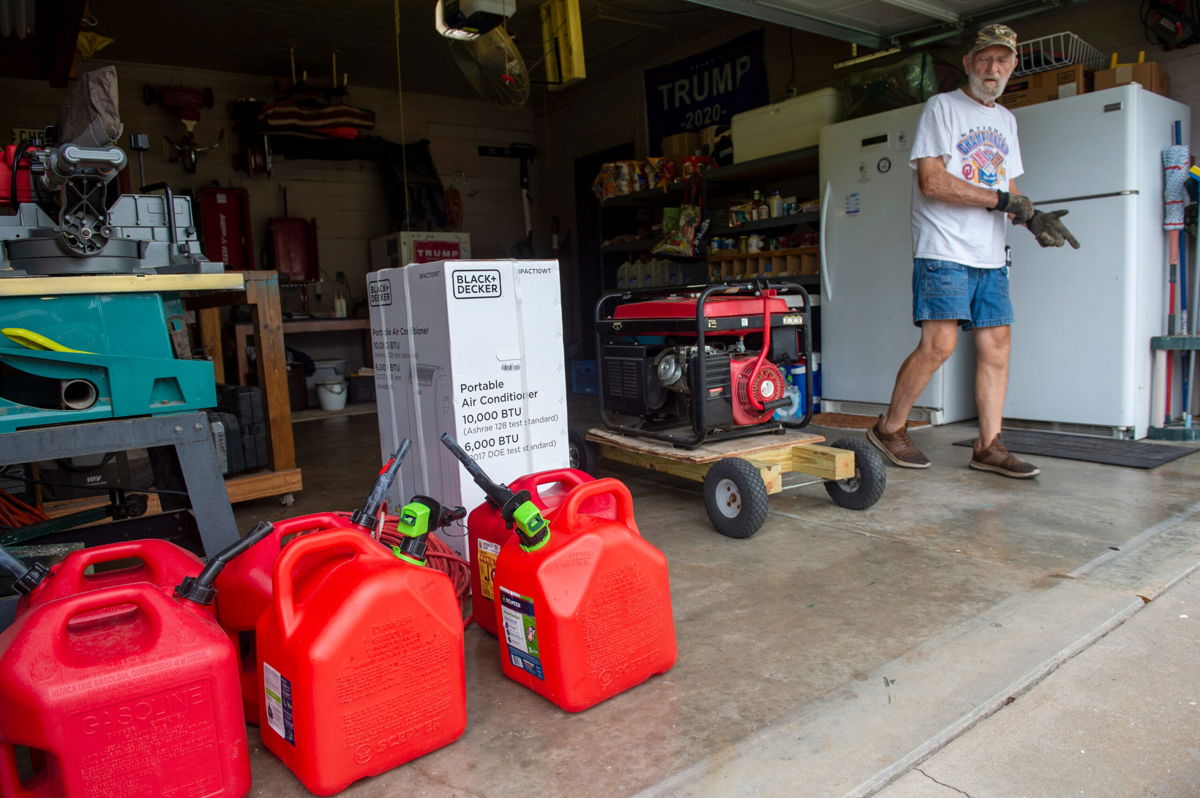What weeks without power and water could look like for Ida storm victims

More than a million people have lost power during Hurricane Ida
By Holly Yan and Theresa Waldrop, CNN
Those hit hardest by Hurricane Ida now face an even longer test of survival.
Catastrophic damage means some Louisiana parishes won’t have electricity for up to a month — which can be deadly in the oppressive heat.
Many areas still lack running water or have sewage systems that aren’t fully working.
“We have had devastation before, but we have never seen anything of the magnitude of Hurricane Ida,” said Councilwoman Tammy Houston of St. John the Baptist Parish.
The next few weeks will be ugly. Here’s what experts say residents can do:
Evacuate or stay evacuated
Without water and electricity, “there’s nothing here for them,” Houston said Wednesday — three days after Ida made landfall.
Staying away from the worst-hit areas is the best thing storm victims can do — not just for themselves, but to expedite the recovery, said retired US Army Lt. Gen. Russel L. Honoré.
Honoré led Task Force Katrina following Hurricane Katrina in 2005. With the breadth and magnitude of Ida’s destruction, “My thoughts are they’ve got to do a post-storm evacuation.”
“It’s going to be almost impossible to maintain that many people with clean water and sewage and hospitals, essential services, without electricity in metropolitan areas,” Honoré said.
“They’ve got to evacuate. It’s not what they want to do, it’s what they got to do if they want to stay alive,” he said.
“Maybe there’ll be a few hardy (people) that will figure out how to do it. But your elderly and people with children, they just need to go take a FEMA vacation. Have FEMA give them a voucher to a hotel and count your blessing that you’re still alive.”
Those seeking assistance from the Federal Emergency Management Agency can call 1-800-621-3362 (TTY 1-800-462-7585) or apply at DisasterAssistance.gov.
Here’s how to stay safe, get help and start the recovery process after a hurricane
Realize the pandemic will impact hurricane recovery
With this hurricane coinciding with the Covid-19 pandemic, it’s even more important to not strain recovery efforts, former FEMA Administrator Craig Fugate said.
“Hospitals are already overwhelmed with Covid. The last thing they need is more heat exhaustion or trauma or recovery,” Fugate said.
“As much as possible, if you’re not there, stay away from that area. Until you really get power up and water systems, this is not going to be a good place to get back to quickly.”
Brace for water and sewer outages
Another reason to stay away from the hardest-hit areas if you can: Water and sewer outages can make life miserable or even dangerous.
In addition to searing summer heat, some places will have “no flushing toilets (and) no drinking water, unless you get it out of a bottle from somebody,” Honoré said.
“Most water is moved by electricity as well as the sewage system. So without electricity, you can’t move sewage and you can’t clean drinking water.”
In Plaquemines Parish, “Due to lift stations power outages, all parish residents are asked to limit sewer usage and flushing,” the parish government tweeted Wednesday.
Sometimes, impromptu facilities may be needed.
“When sections of the population can no longer use their toilets, public facilities may need to be provided, by allowing access to schools, community centers, etc., or by setting up temporary public toilets,” the World Health Organization said.
“If available, chemical toilets may be placed on street corners and emptied by municipal workers.”
In some cases, generators can help power water and sewer systems until electricity is fully restored. The power company Entergy said Tuesday it was “working with the New Orleans Sewage and Water Board and offered back-up generation, in addition to their own back-up generation sources.”
But officials are asking residents to help reduce stress on the sewer systems.
“In order to prevent sewage backups, we have asked residents to limit water usage at home, thus decreasing the amount of wastewater we must pump and treat,” the Sewerage & Water Board of New Orleans tweeted Wednesday.
“At this time, the only way to remove sewage is to utilize vacuum trucks to remove sewage from manholes throughout the area. Again, we ask you to please be mindful of your water usage.”
The president of St. Tammany Parish has also asked residents to keep conserving water to ease the stress on the sewage systems.
Find creative ways to keep your phone alive
Ideally, residents have ways to charge their cell phones without the use of electricity — for example, with an external battery pack or battery-powered charger.
Those who don’t may have to get creative — such as using your car and a car adapter to charge your phone.
Some communities have set up public charging stations. ImagineWaterWorks.org posted a map showing where residents can get power and charge their phones in the New Orleans area.
Have patience and prepare for a long recovery
With Ida’s magnitude of devastation, Honoré predicts it will take “a month to get people back, and 10 years to rebuild.”
“Take care of one another, and get your patient pill out and go find some relatives you can go couch surf with,” he advised.
“And count your blessings that you’re still alive.”
The-CNN-Wire
™ & © 2021 Cable News Network, Inc., a WarnerMedia Company. All rights reserved.
CNN’s Gregory Lemos contributed to this report.